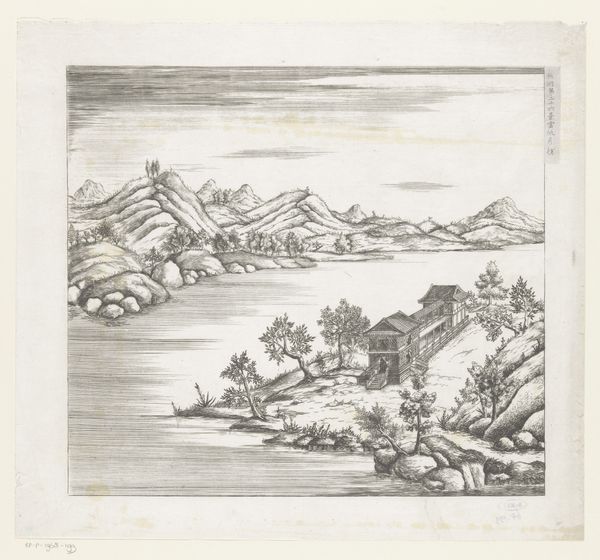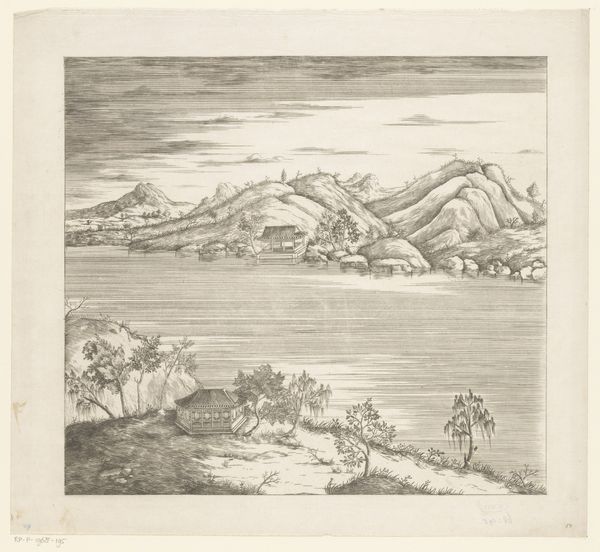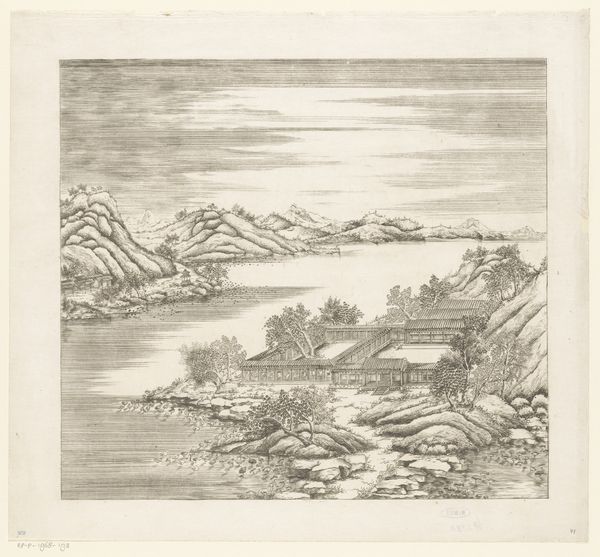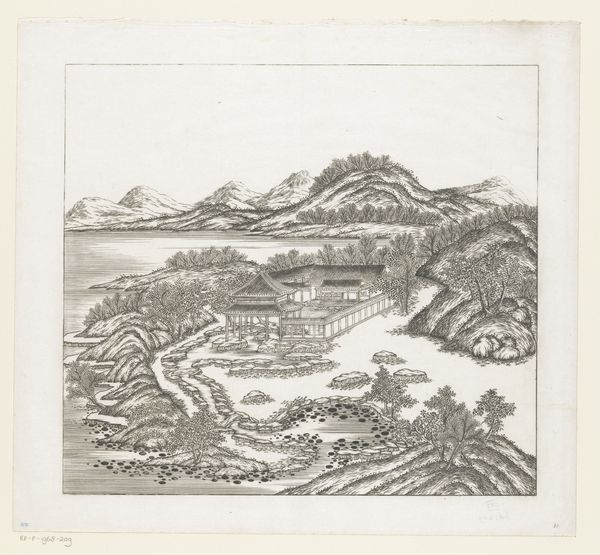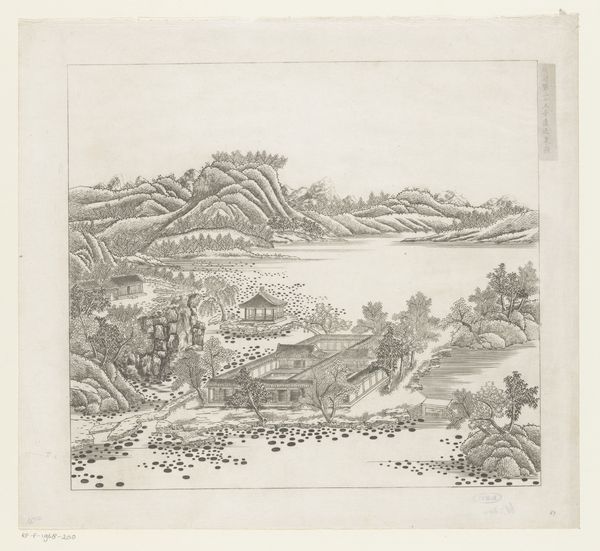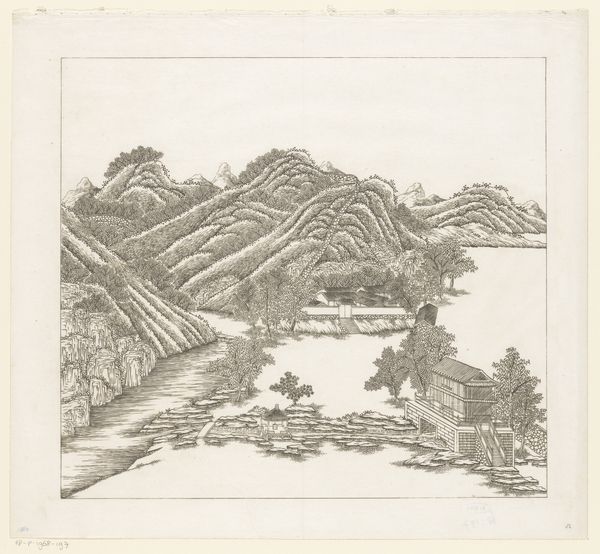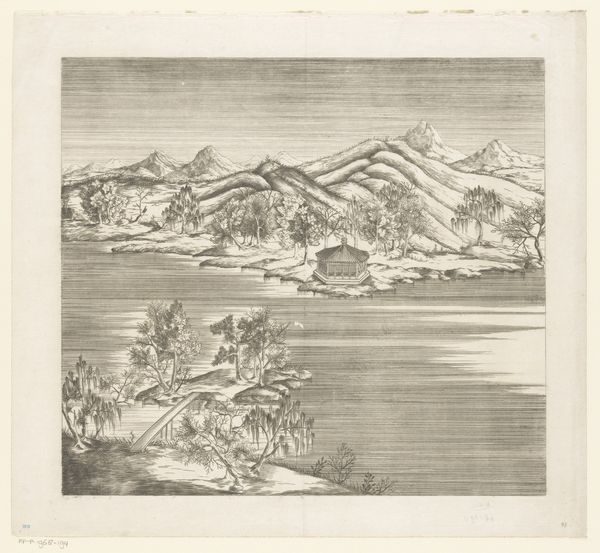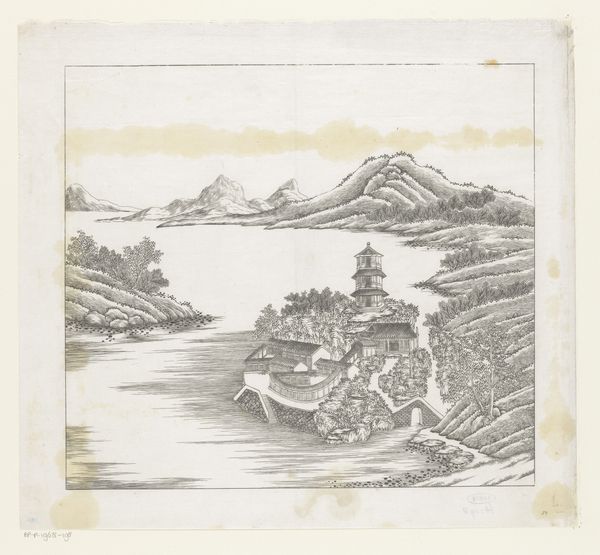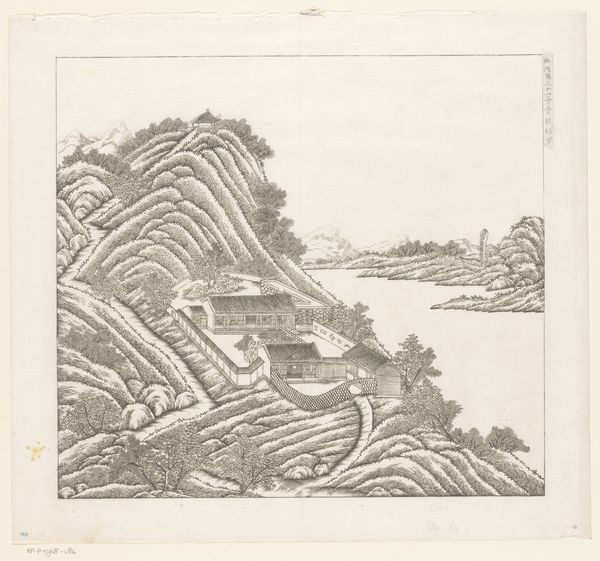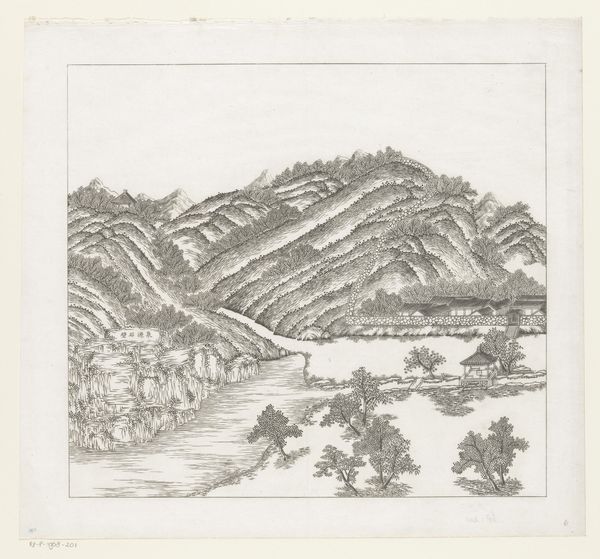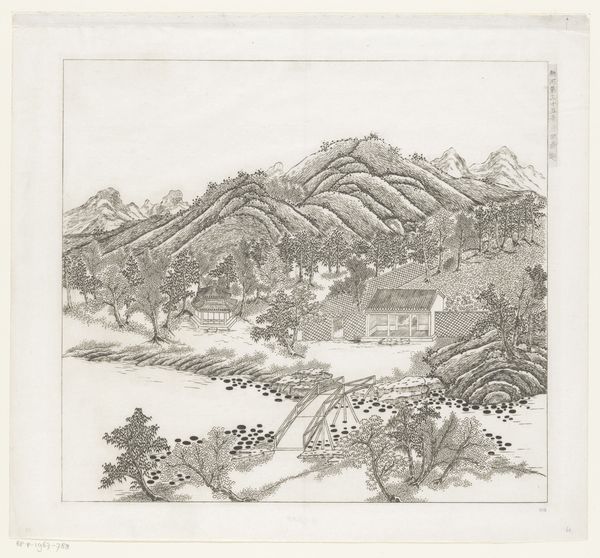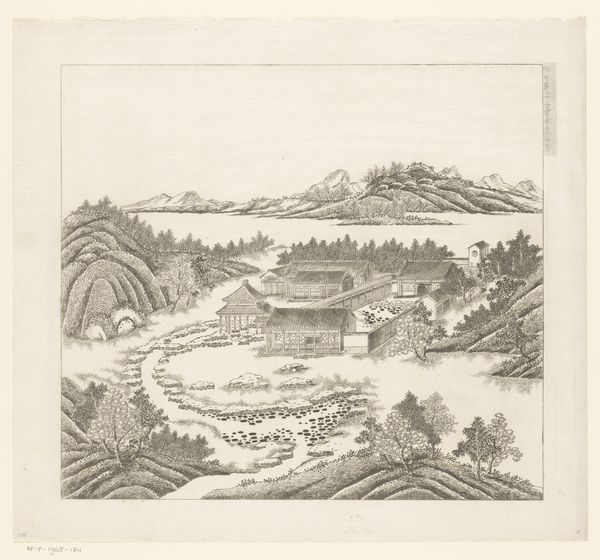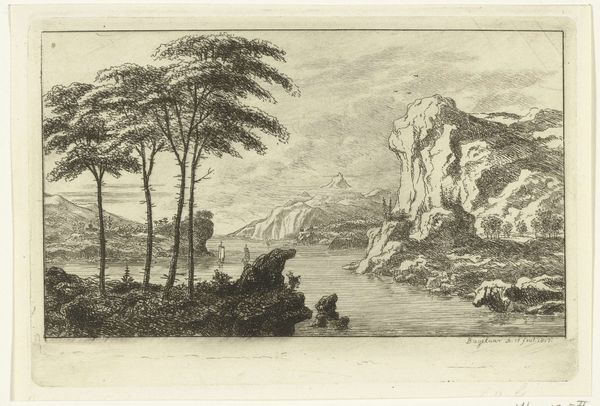
Gezicht op een deel van het keizerlijk zomerpaleis in Chengde (Jehol) te China 1712 - 1714
0:00
0:00
print, engraving
# print
#
pen sketch
#
asian-art
#
old engraving style
#
landscape
#
line
#
cityscape
#
engraving
Dimensions: height 322 mm, width 356 mm
Copyright: Rijks Museum: Open Domain
Editor: Here we have Matteo Ripa's "Gezicht op een deel van het keizerlijk zomerpaleis in Chengde (Jehol) te China," created between 1712 and 1714. It's an engraving, quite delicate. The overall composition gives off a sense of serene grandeur. What strikes you about this particular print? Curator: Well, the first thing that grabs my attention is its creation. Ripa, an Italian missionary and artist, was employed by the Kangxi Emperor. The engraving serves as a fascinating record and tool of cultural exchange. Considering its purpose as documentation for a Western audience, how do you think the imagery might have been carefully chosen or perhaps even manipulated? Editor: That’s a great point! The detail given to the landscape suggests a romantic idealization of the palace and its surrounding nature, perhaps to impress or even subtly persuade a European audience of the Emperor's power and refinement. It’s interesting that a European artist is shaping the European understanding of China. Curator: Precisely! Consider the politics of representation at play here. Ripa wasn't just documenting, he was performing a role within a complex intercultural dialogue. This print becomes not just an image, but a record of imperial power mediated through a European lens. What does that tension tell you? Editor: I see! It adds another layer to the image. It's no longer simply a record, but also a political statement, revealing the cultural biases and power dynamics inherent in its creation and intended reception. So, appreciating this piece means understanding the political undercurrents and colonial undertones within the artwork? Curator: Absolutely. The print becomes more profound when you consider the historical and political conditions of its production. Understanding who commissioned the work and for what purpose adds crucial layers to our understanding. Editor: That’s really opened my eyes to looking beyond the surface. Thank you! Curator: My pleasure! I'm now seeing it with a new perspective too, which makes it a success.
Comments
No comments
Be the first to comment and join the conversation on the ultimate creative platform.
